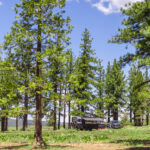
MENUMENU
TALK TO AN EXPERT
Special Hours: 7AM – 6PM PST
TALK TO AN EXPERT
Special Hours: 7AM – 6PM PST
You’ve probably heard of solar power systems for your RV – but they aren’t the only choice for environmentally conscious RVers or those looking for off-grid power solutions. Wind turbines for RVs have become more common in recent years as technology has improved.
So what do you need to know if you’re considering adding one to your electrical setup – and can one actually power your whole RV? We’re breaking down the basics for you.
An RV wind turbine is a portable windmill device that harnesses the power of the wind to generate electricity. This electricity can power your RV’s electrical system, giving you a sustainable off-grid power source. Generally, they are either mounted on your RV roof, ladder, or sometimes on a freestanding pole.
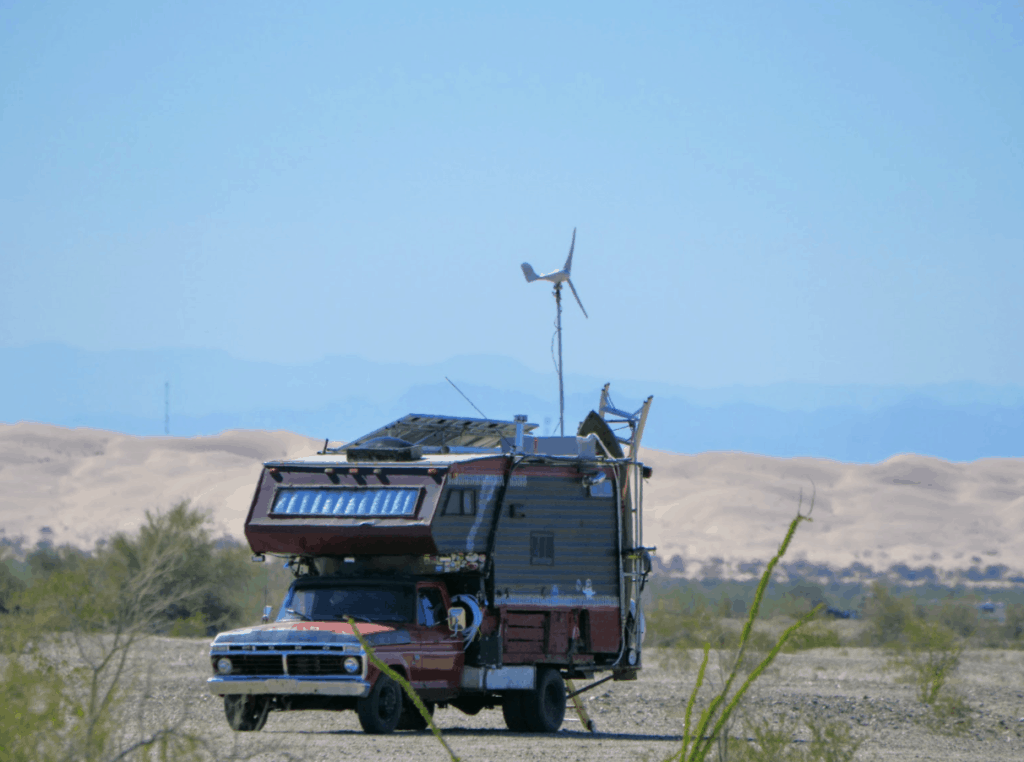
Wind turbines are equipped with large blades that turn when the wind blows over them. When these blades spin, they capture the wind’s kinetic energy and use it to turn a generator, creating power.
RV wind turbines typically generate a maximum of a few hundred watts at an output voltage of 12 or 24 volts. Below is a sample power output profile of a 500-watt wind turbine. As you can see, the faster the blades spin, the more power they generate. For this model, you need a 30 knot (34 mph) wind speed to generate the rated power of 500 watts.
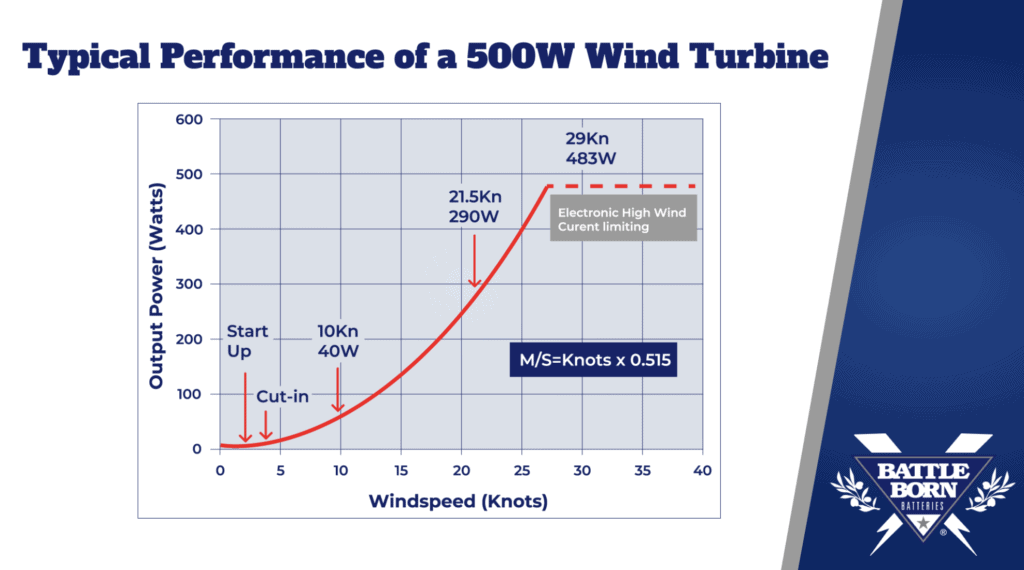
The short answer is yes, but your success using an RV wind turbine depends on your power needs and the weather. At lower wind speeds, you’ll only produce a fraction of the turbine’s capacity, which are already on the low end for most people’s power needs.
For example, referring back to the graph above, you can see that a 10 knot (11 mph) wind only generates about 40 watts. That’s only 10% of the rated capacity!
Additionally, since wind turbines only generate power when the wind is blowing, you’ll want to connect yours to a battery system to store the energy for when you need it. In some cases, you’ll be able to plug your turbine directly into your RV’s house batteries without a charge controller. However, many models include one to protect your batteries and increase efficiency.
If you’re planning to rely solely on your wind turbine, you’ll likely need to make some lifestyle changes to lower your overall power requirements. People often use their wind turbines as a supplement to other charging sources, such as solar.
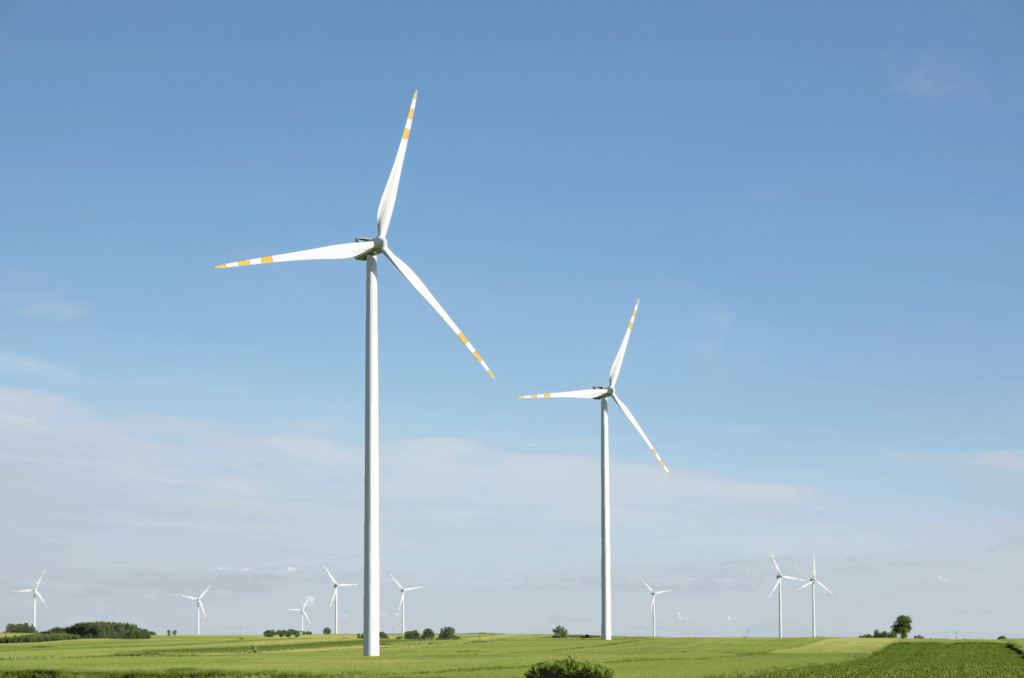
Harnessing clean energy wherever you are sounds like a dream scenario for many RVers. However, using an RV wind turbine does come with some drawbacks.
You can’t just leave your turbine set up all the time, especially while driving. This means you’ll need to spend time assembling and disassembling your turbine every time you change camping spots. This may not be a big deal for those who like to stay for long stretches in the same place, but frequent travelers will find it inconvenient.
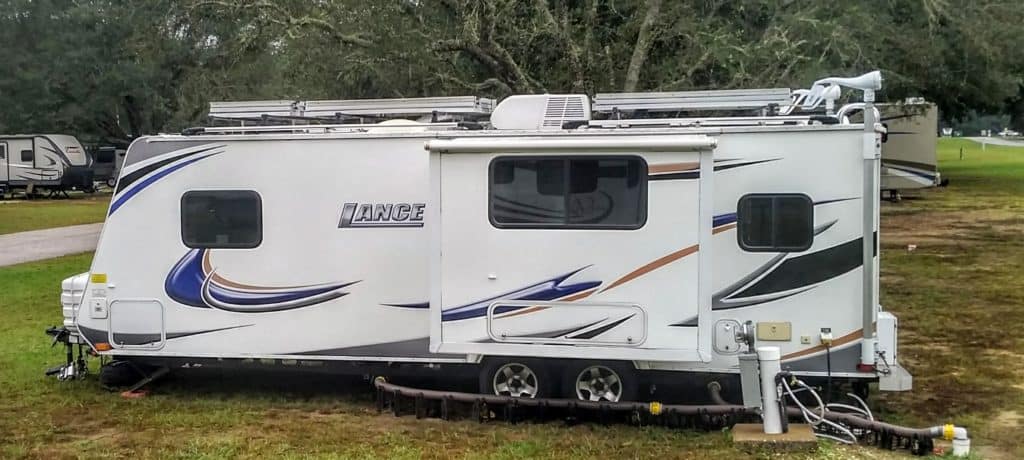
The most obvious drawback of wind turbines is that they won’t generate anything power if it’s not windy! Most wind turbines need 20+ mph winds to produce their maximum output, just like the example above. Camping in strong winds is not everyone’s idea of a fun time. You’ll also need to ensure you set up camp in an area without any large items, trees, or hills blocking the path of the wind.
Turbines work best when you raise them high, allowing them unobstructed contact with the wind. However, raising them high up also creates your very own RV lightning rod! Lightning strikes can be dangerous and deadly for humans and will undoubtedly damage or destroy your wind turbine equipment.
Unfortunately, wind turbines is that they don’t generate quite as much power as other off-grid or renewable options. Even in optimal wind speeds, the amount of energy produced likely won’t be enough to cover all your needs. Keep this in mind if you’re hoping to use wind as your sole source of power for extended amounts of time.
Even on cloudy days, solar panels produce some energy. On the other hand, wind turbines require a minimum wind speed to generate any power. This is known as the “cut-in speed.” Below the cut-in speed, you get zero energy output. As we saw in the power profile sample above, you need a fairly strong wind to generate any significant amount of power.
Wind turbines also have a “cut-out” or “cut-off” speed. This is the fastest wind speed your turbine can handle without risking damage. Even if winds blow significantly faster than this speed, you won’t generate any additional electricity.
Yes, but it depends on your wind turbine and your solar power system. Some, but not all, turbines can be paired up with solar to provide more diverse power options and more overall power generation capacity. Some pre-assembled kits are also available, combining solar and wind energy in one comprehensive package.
If you have low power requirements and like camping in windy locations, an RV wind turbine may be a great off-grid option. Wind turbines are environmentally friendly, affordable, and will produce power all day and night under the right wind conditions. However, if you need to power lots of appliances and devices, you may be better off going with a solar power system.
While the benefits of an RV wind turbine might not blow you away, wind power systems do have some nice benefits. Before investing in one, make sure you understand your power needs, camping style, and current electrical setup. In the right situation, a well-chosen wind turbine can help take your RV anywhere the wind blows!
We know that building or upgrading an electrical system can be overwhelming, so we’re here to help. Our Reno, Nevada-based sales and customer service team is standing by at (855) 292-2831 to take your questions!
Also, join us on Facebook, Instagram, and YouTube to learn more about how lithium battery systems can power your lifestyle, see how others have built their systems, and gain the confidence to get out there and stay out there.
Shop Best Sellers

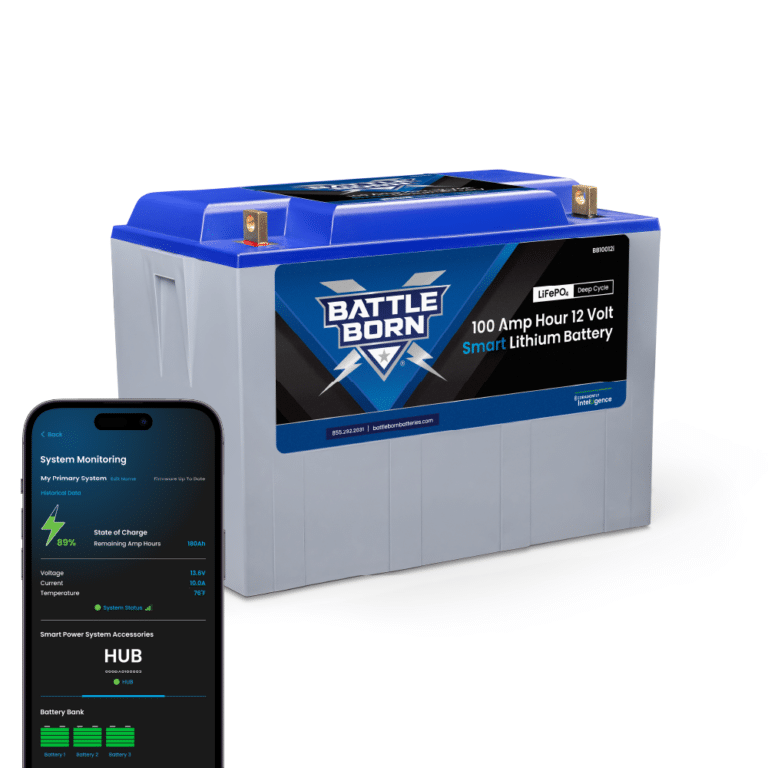

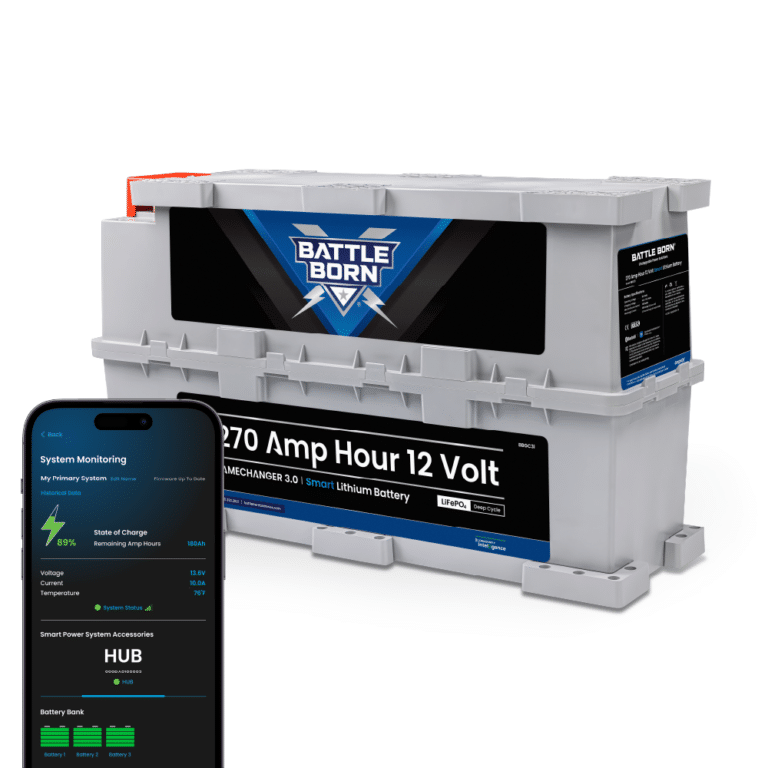




Ask a technical specialist now at 855.292.2831
Stay in the Know
2 thoughts on “Can a Wind Turbine Power My RV?”
Greetings,
I hope ur doing well,
I have compervan ( Mercedes sprinter 316 long hight roof ) and I have a problem with the electrical system, which lies in its inability to work according to working hours with consideration that the surface area
Fits maximum 3 solar panels.
This is due to the lack of an air conditioner with suitable capacities.
Can I use this system WIND to charge the batteries? How can that system work? Are there other solutions?
Thank you
Hi Ali, thank you for reaching out. Our articles strive to be helpful resources and so we appreciate any and all feedback. Our team would be more than happy to assist with any system assessments and specs that you need, so please give us a call at 855-292-2831 to provide additional information. Thanks again and have a great rest of your day!